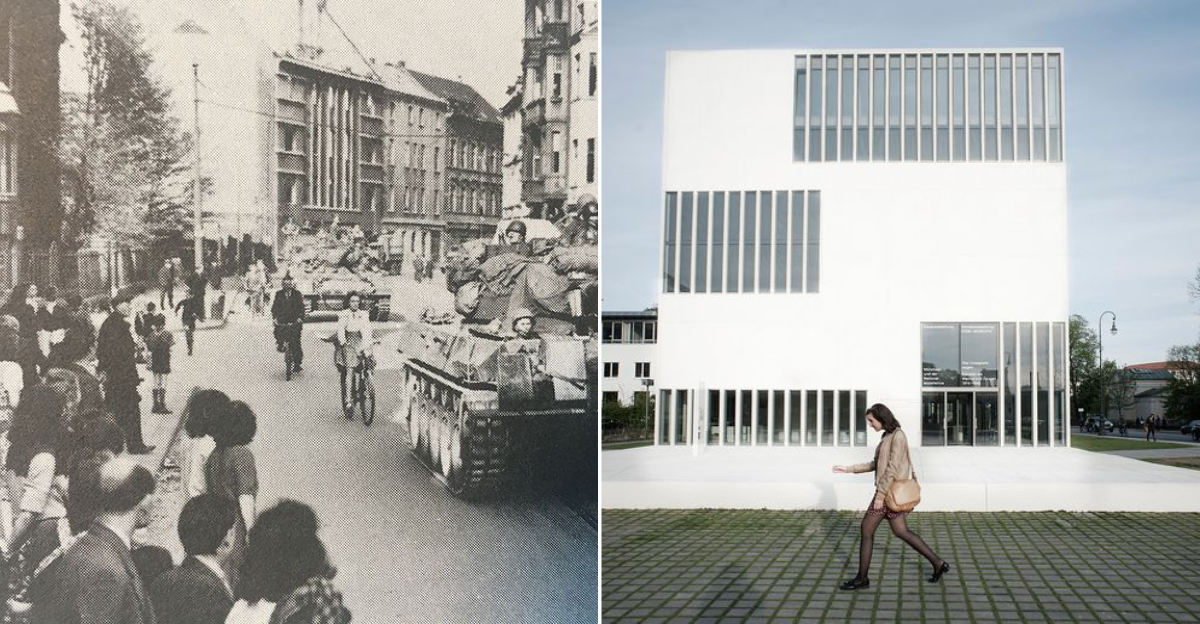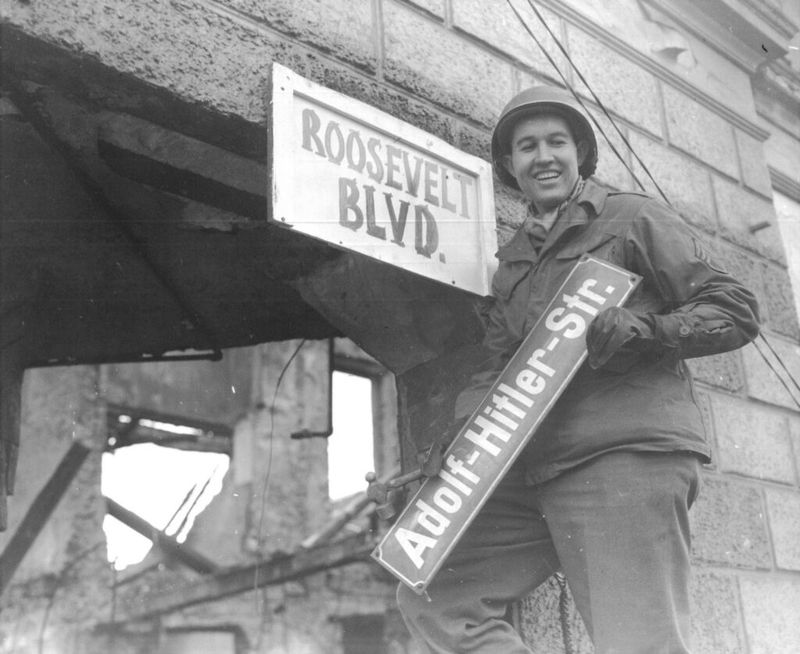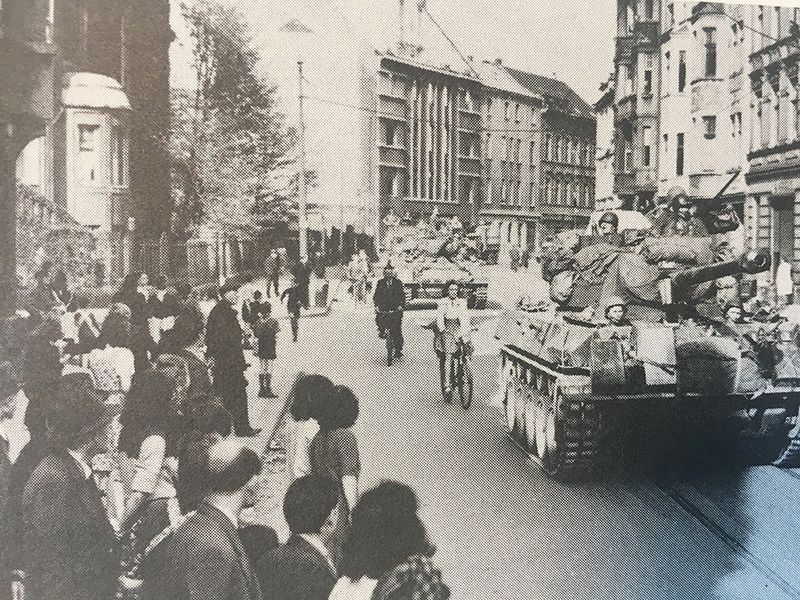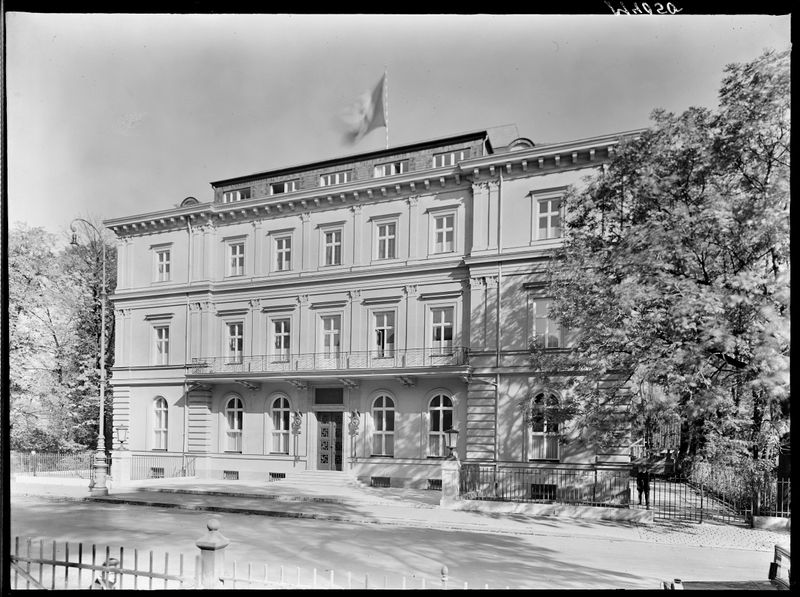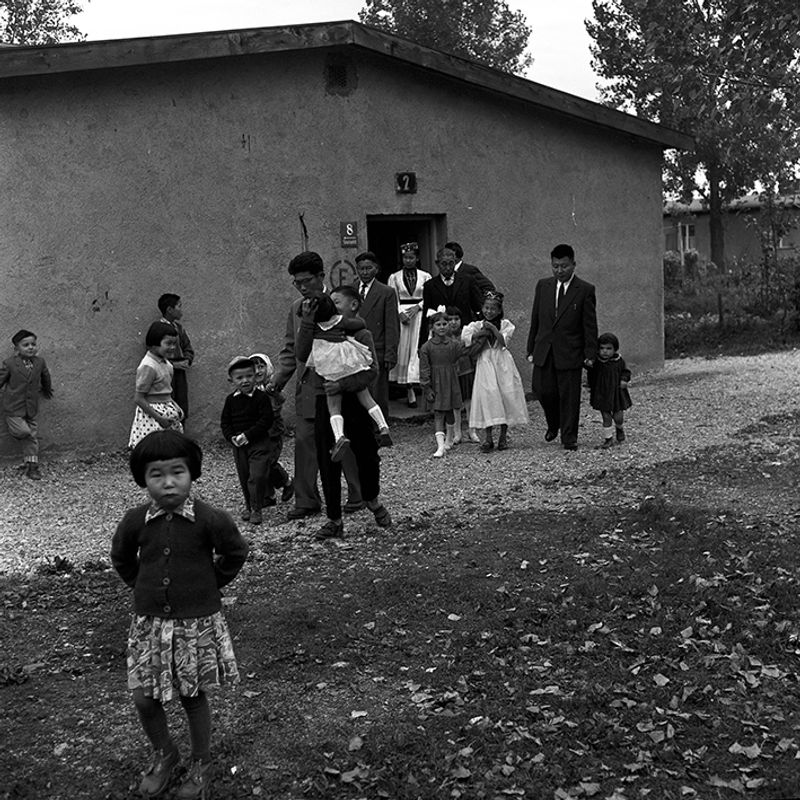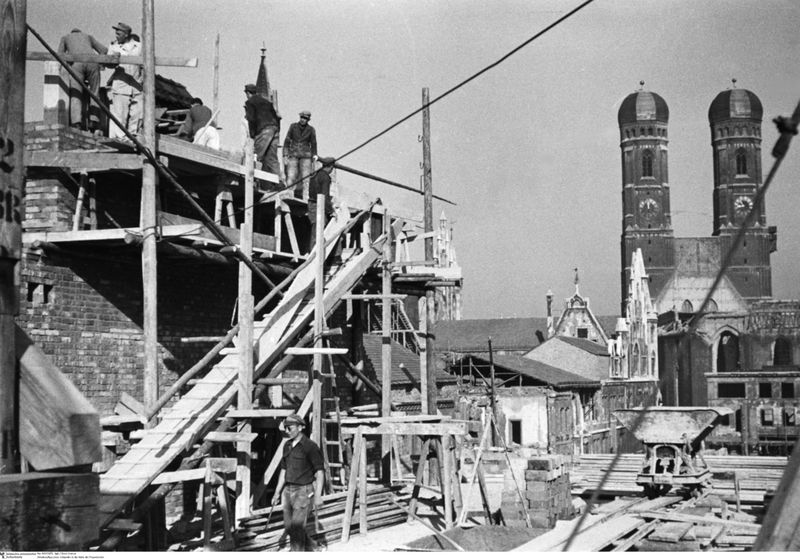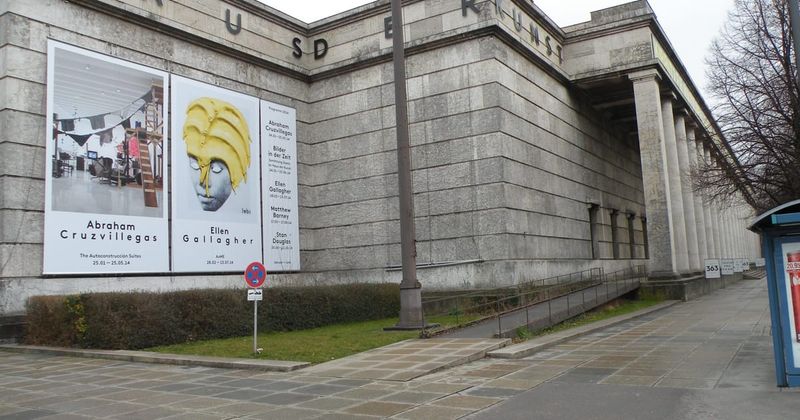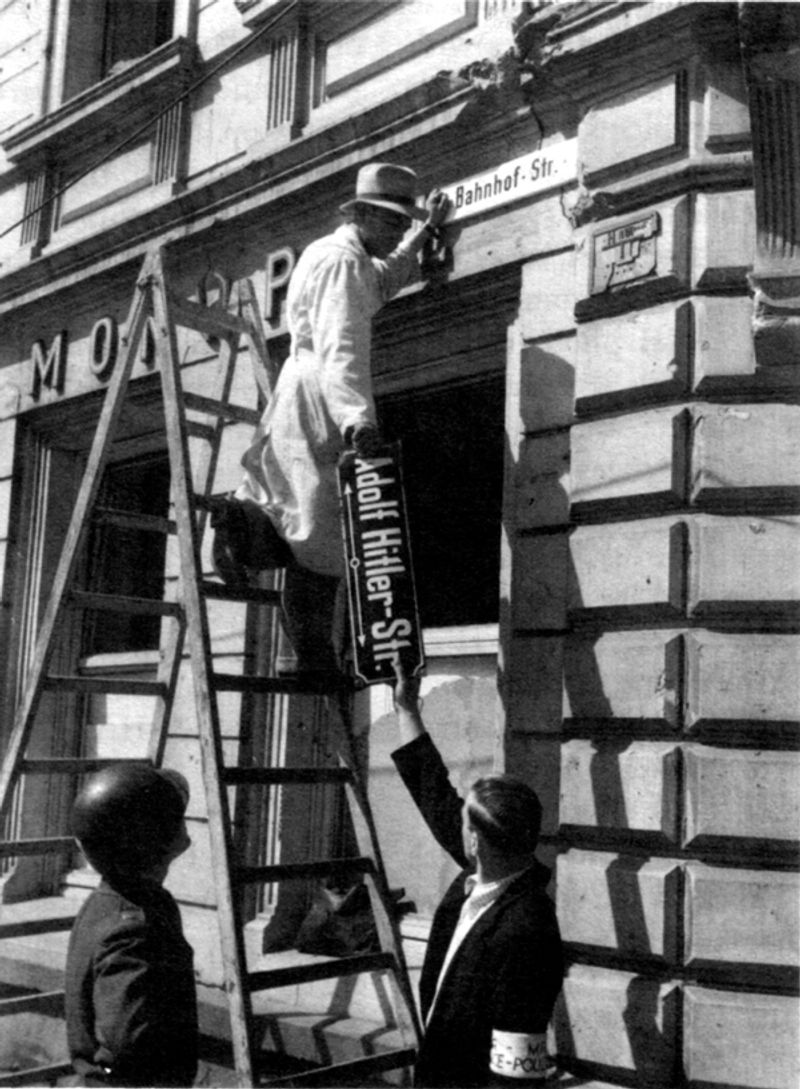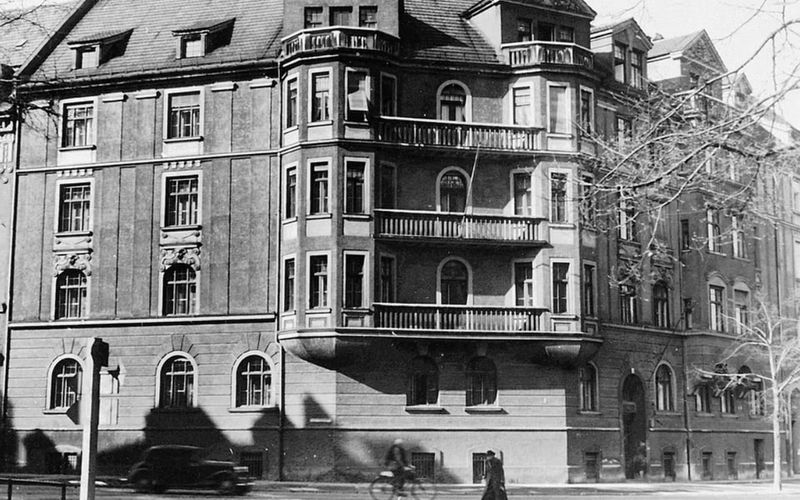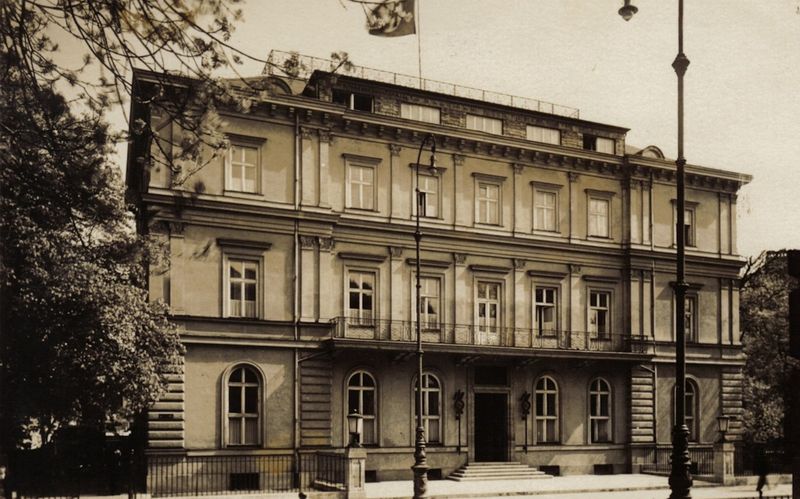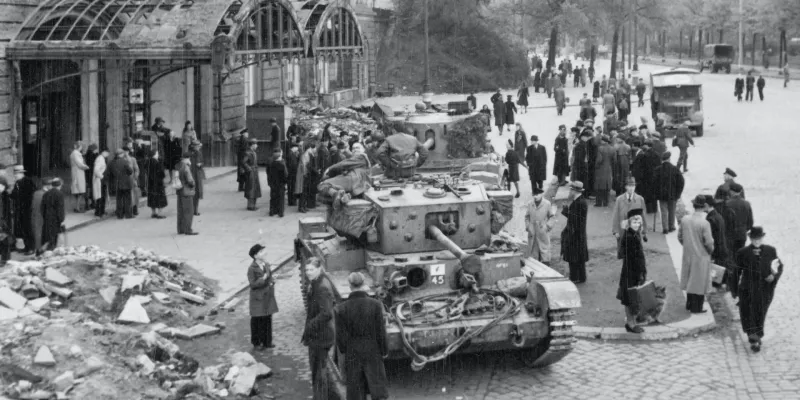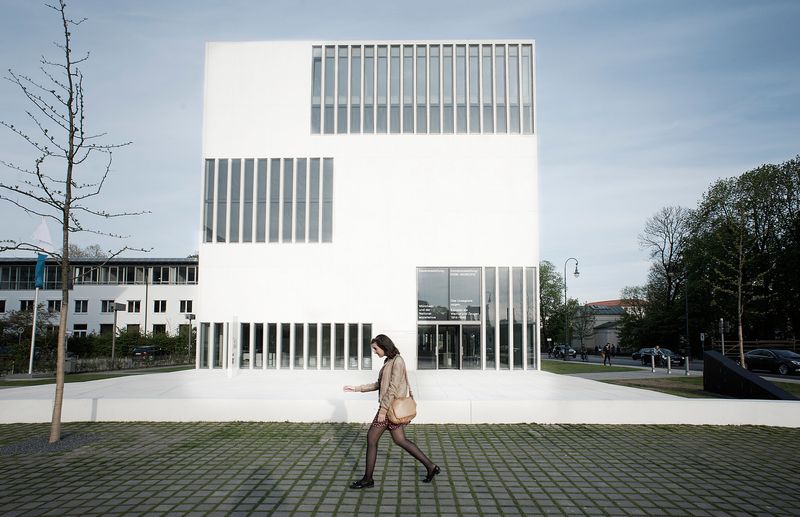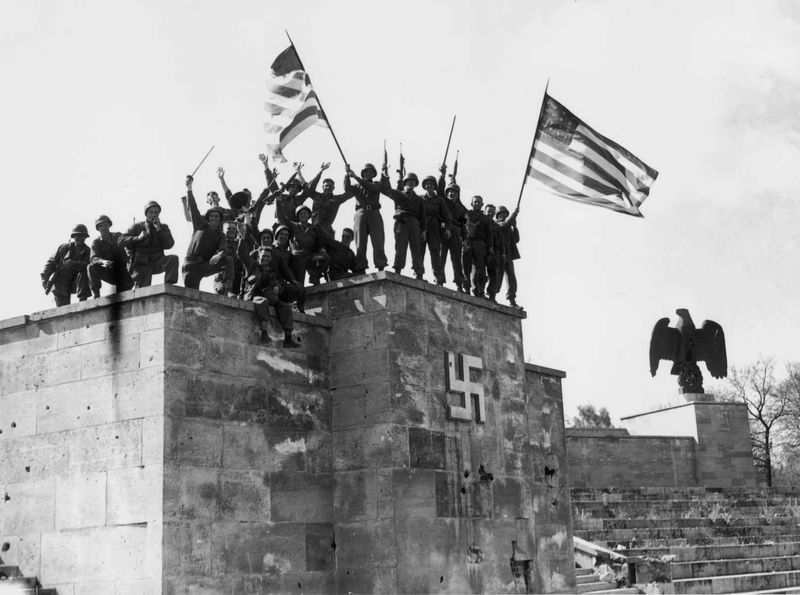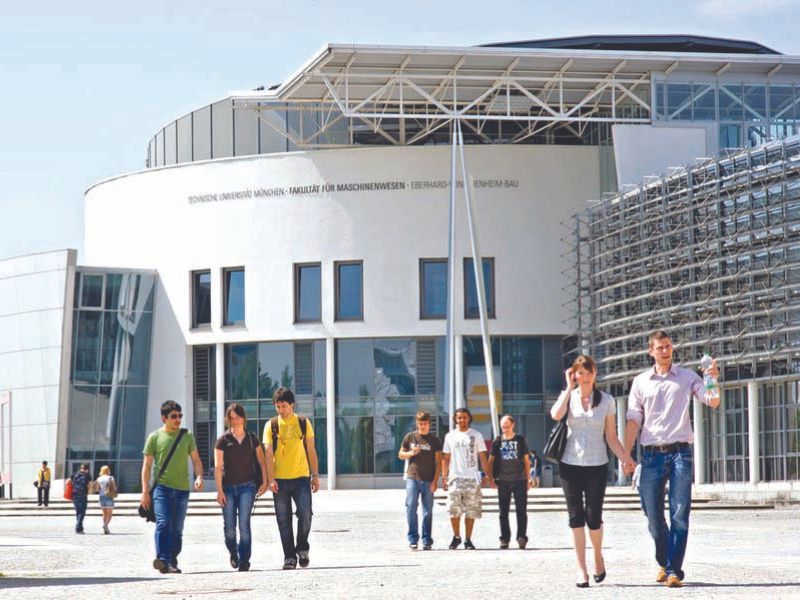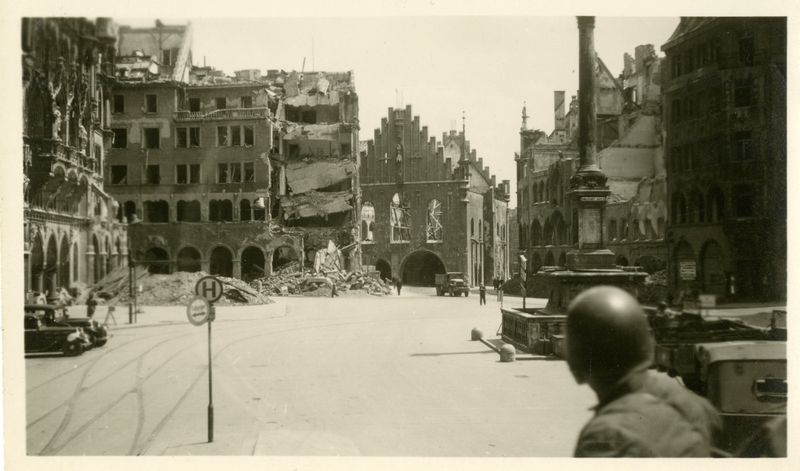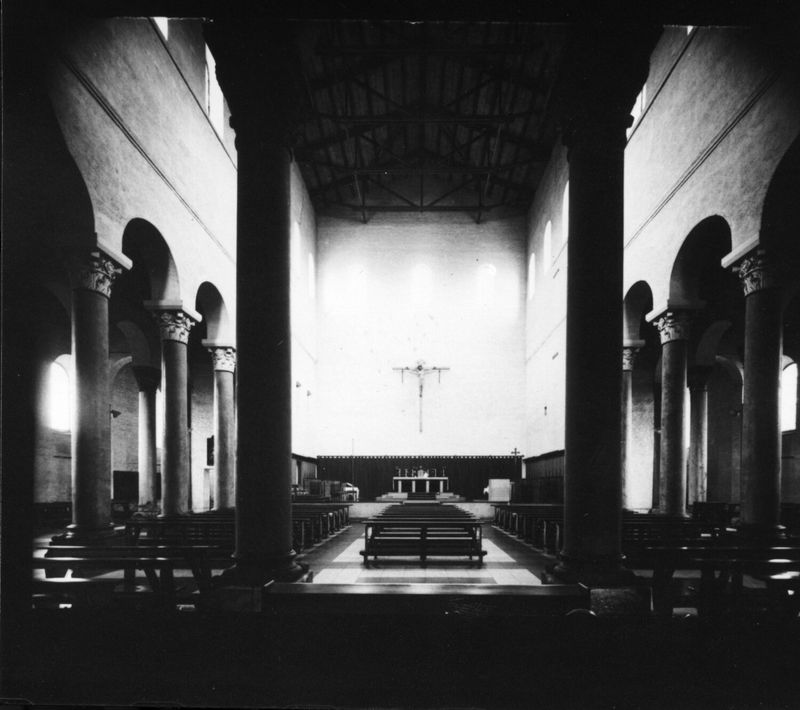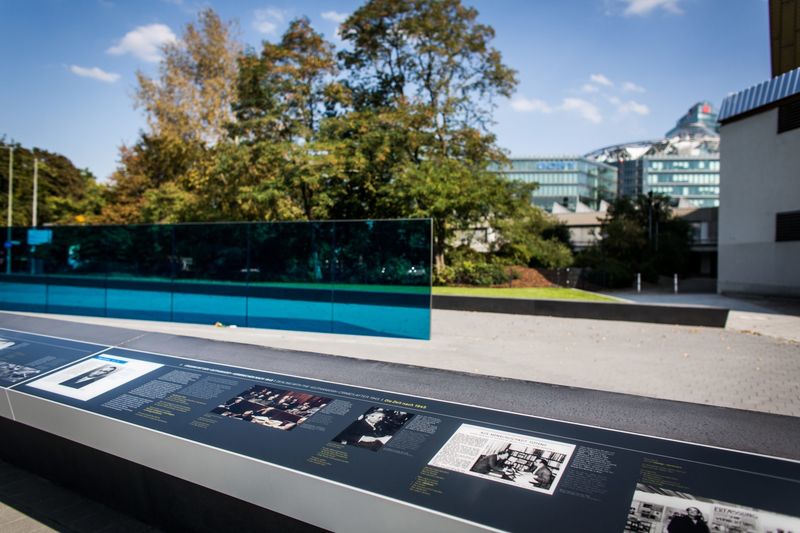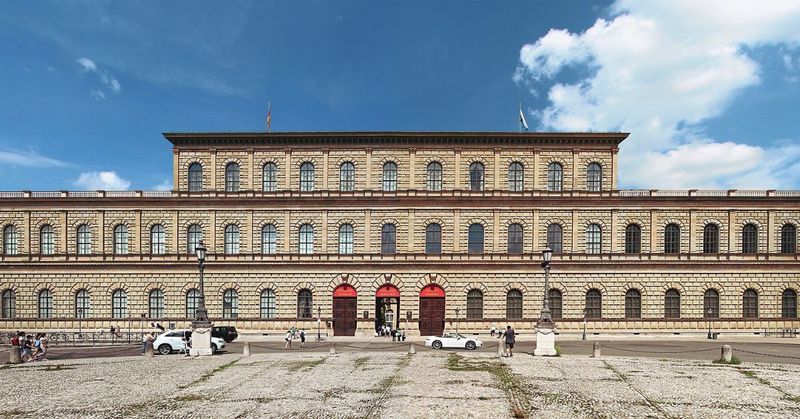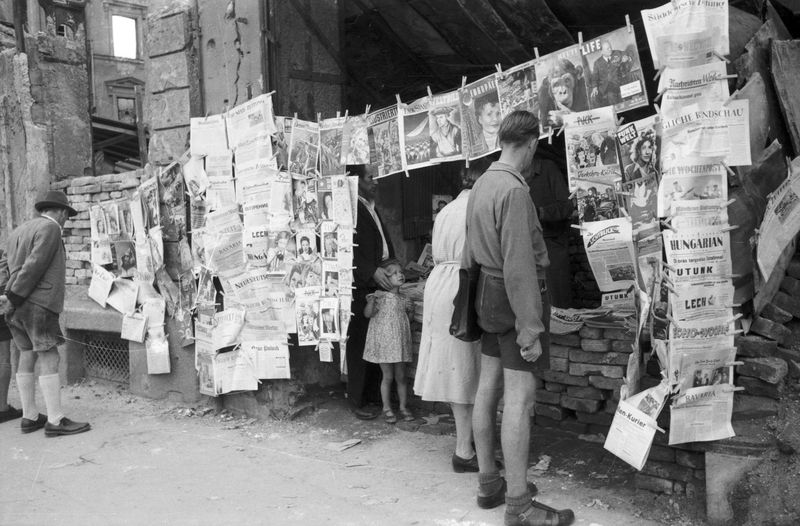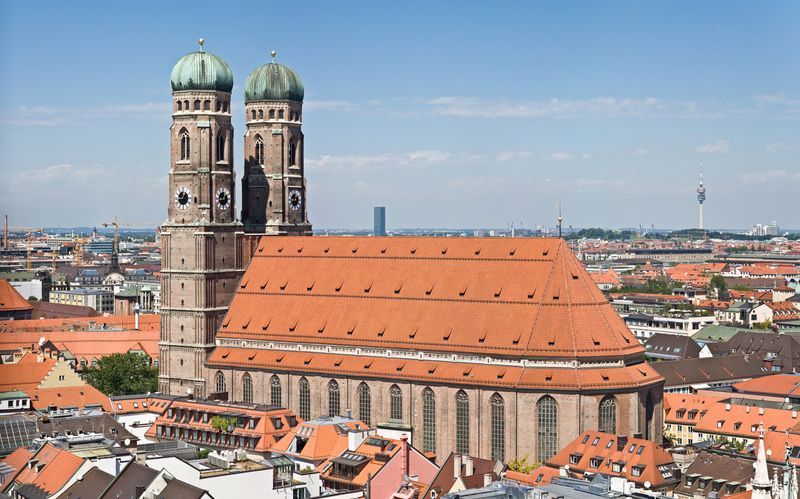Explore how Munich evolved in the aftermath of World War II, transforming from a hub of Nazi power to a city of democratic rebirth and cultural reinvigoration. This guide delves into the profound changes Munich underwent after the fall of the Third Reich in 1945, highlighting the city’s journey towards renewal, remembrance, and resilience.
1. The Nazi Regime Was Dismantled
The fall of the Third Reich signaled the end of Nazi rule in Munich. Allied forces dismantled Nazi institutions, eradicating propaganda and leadership structures. This dismantling symbolized a fresh start and the hope of a new era.
Nazi symbols were removed from public spaces, replaced with democratic icons. This transformation was both a physical and ideological cleansing, marking the city’s departure from its oppressive past.
The dismantling process was essential in Munich’s recovery, as it paved the way for a society built on democratic values and human rights.
2. Allied Occupation Took Over
Munich came under U.S. military occupation post-1945, transforming into a hub for denazification efforts. The presence of Allied forces was a stark reminder of the city’s transition from war.
American influence permeated Munich’s daily life, from military administration to cultural integration. The occupation aimed to instill democracy and dismantle authoritarian remnants.
Munich’s streets, once filled with Nazi parades, now resonated with new hope and possibilities under Allied oversight, guiding the city towards a democratic future.
3. War Crimes Trials Were Held
Following the war, Munich held its own war crimes trials, echoing the larger Nuremberg Trials. These proceedings targeted lower-ranking Nazi officials and collaborators, seeking justice for wartime atrocities.
The trials were a crucial step in Munich’s denazification, confronting its past and holding individuals accountable. Public interest was intense, with international press documenting each moment.
These trials reinforced the rule of law and human rights, setting precedents for future justice systems and contributing to Munich’s transformation into a symbol of accountability.
4. The SS Headquarters Was Demolished
The notorious SS headquarters in Munich was demolished post-war, a powerful act of defiance against Nazi tyranny. This demolition was not just physical but also a moral rejection of the oppressive regime.
The destruction of the SS building was a liberating moment, symbolizing Munich’s break from its dark past. New spaces emerged in place of the old, ready for renewal.
This act paved the way for new beginnings, as Munich sought to rebuild and redefine its identity, free from the shadows of the past.
5. Refugees and Displaced Persons Flooded In
Post-war Munich became a refuge for thousands seeking safety from destroyed regions across Europe. The influx of refugees and displaced persons added strain to the city’s resources but also enriched its cultural fabric.
Munich’s train stations and streets were filled with diverse faces, each with stories of survival and hope for a new beginning. The city’s identity evolved as it embraced these newcomers.
Despite challenges, this migration wave marked Munich’s transition into a cosmopolitan hub, fostering resilience and community spirit in the face of adversity.
6. Entire Districts Were Rebuilt from Rubble
With over half of Munich destroyed, entire districts were painstakingly rebuilt from the rubble. The reconstruction effort reshaped neighborhoods, brick by brick, into modern living spaces.
This monumental task required ingenuity and perseverance, as architects and workers collaborated to restore city life. New architectural styles merged with traditional designs, creating a unique urban landscape.
Rebuilding was more than a physical task; it was symbolic of Munich’s spirit of renewal and determination to rise from the ashes of destruction.
7. Art and Cultural Institutions Were Reclaimed
In the aftermath of war, Munich’s art and cultural institutions reopened, distancing themselves from Nazi influence. Museums and galleries showcased classical and modern German art, celebrating freedom of expression.
These institutions played a pivotal role in Munich’s cultural revival, fostering creativity and intellectual growth. The return to cultural roots was a collective healing process.
Artistic endeavors became a beacon of hope, guiding Munich towards a future rich with diversity and creativity, free from oppressive ideologies.
8. Munich Became a Center for Denazification
Allied forces launched comprehensive denazification campaigns in Munich, targeting Nazi influence in public life and institutions. Screening programs sought to identify and remove remnants of Nazi ideology.
Public campaigns educated citizens about democratic values, promoting transparency and accountability. These efforts were crucial in reshaping Munich’s social and political landscape.
Denazification was not just about removing individuals; it was about transforming the mindset of a city, nurturing a culture of open-mindedness and progress.
9. Hitler’s Former Residence Was Repurposed
Hitler’s former residence in Munich, located at 16 Prinzregentenplatz, was repurposed post-war into an office for U.S. military intelligence. This transformation was a symbolic reclaiming of space from tyranny.
The building, once a site of power, became a center for democratic oversight and operations. Its new purpose marked a radical shift in Munich’s narrative.
This repurposing signified Munich’s commitment to moving forward, leaving behind symbols of oppression in favor of new beginnings centered on peace and democracy.
10. The Nazi Party Headquarters Was Shut Down
Munich’s “Brown House,” the Nazi Party headquarters, was shut down and eventually replaced by the Documentation Centre for the History of National Socialism. This change highlighted Munich’s dedication to remembrance and education.
The building’s closure was a critical step in Munich’s journey from tyranny to transparency. The new center serves as a poignant reminder of the past.
This transformation underscores Munich’s resolve to confront history, fostering an informed society that values truth and learning from past mistakes.
11. Newspapers and Media Were Reborn
Post-war Munich saw a resurgence of newspapers and media, reborn under Allied supervision. Media outlets were overhauled to promote democracy and eliminate fascist rhetoric.
This media renaissance marked a new era of free press in Munich, vital for nurturing informed citizens and transparent governance. Diverse opinions flourished in the new media landscape.
The rebirth of media was crucial for rebuilding trust and communication, ensuring Munich’s democratic values were upheld and celebrated.
12. Public Monuments Were Reconsidered
In Munich, public monuments underwent scrutiny and transformation to reflect new democratic values. Many Nazi-era symbols were removed or recontextualized to promote transparency and remembrance.
This reevaluation of monuments was a step towards healing, allowing the city to acknowledge its history while embracing a future grounded in truth and diversity.
The process of reconsidering monuments was integral to Munich’s renewal, symbolizing a commitment to honesty and education in public spaces.
13. A New Political Landscape Emerged
Post-war Munich witnessed the emergence of a vibrant new political landscape. Democratic parties rose, replacing the authoritarian structures of the past.
This political renewal was essential for the city’s recovery, as citizens engaged actively in governance. The reestablishment of local governance marked a return to community-driven decision-making.
The new political environment fostered dialogue and innovation, paving the way for Munich’s inclusive and progressive future.
14. American Culture Left a Mark
The presence of U.S. troops in Munich post-1945 brought an infusion of American culture. Movies, music, and fast food began influencing daily life, introducing a new cultural dynamic.
American cultural elements were embraced by Munich’s citizens, blending with local traditions to create a unique cultural tapestry. This exchange enriched Munich’s social life.
The American cultural influence played a role in shaping a cosmopolitan identity for Munich, bridging international connections through shared entertainment and lifestyle.
15. Universities Reopened With New Missions
The University of Munich, along with other educational institutions, reopened with renewed missions. Faculties restructured to eliminate ties to Nazi ideology, promoting open scholarship and critical thinking.
This academic transformation encouraged intellectual freedom and innovation, positioning Munich as a leader in education and research. Students were empowered to explore diverse fields of study.
The renewal of universities was crucial in cultivating a generation committed to democratic values and global citizenship, fostering an enlightened community.
16. Economic Life Restarted Slowly
Munich’s post-war economy faced significant challenges as businesses rebuilt from scratch. Limited resources and Allied rationing shaped a slow but determined economic revival.
Local enterprises emerged, driven by resilience and innovation, paving the way for a thriving marketplace. The rebuilding of economic structures was a testament to Munich’s perseverance.
This economic rebirth was vital in restoring livelihoods and stability, creating opportunities for growth and prosperity in the recovering city.
17. Religious Institutions Played a Role in Healing
Churches in Munich provided crucial support and solace during the city’s recovery. As spiritual and community centers, they offered shelter and guidance to those in need.
Religious institutions played a significant role in healing, fostering a sense of unity and moral compass. Their involvement helped bridge divides in a fractured society.
This spiritual nurturing was integral to Munich’s recovery, strengthening community bonds and encouraging a compassionate path forward.
18. Memorials to Victims Were Established
Munich established memorials to honor victims of the Nazi regime, including Jews, Roma, and resistance fighters. These spaces served as poignant reminders of the past.
Memorials were integral to Munich’s commitment to remembrance and education, ensuring history was not forgotten. They fostered reflection and dialogue among citizens.
The creation of these memorials underscored Munich’s resolve to acknowledge its history and honor the memories of those who suffered, paving the way for a conscientious future.
19. Historic Buildings Were Restored
Iconic Munich landmarks, such as the Frauenkirche and the Residenz Palace, were meticulously restored post-war. These restorations preserved cultural heritage and history.
The restoration of historic buildings was a blend of artistry and dedication, ensuring Munich’s architectural legacy endured for future generations.
This preservation effort was crucial for maintaining a connection to the past while inspiring pride and continuity within the community.
20. The Black Market Thrived
In the chaotic post-war period, Munich saw a thriving black market as citizens sought to survive amidst shortages. Goods and food were exchanged illicitly, reflecting the desperate times.
The black market was a symbol of resilience, showcasing people’s ingenuity in the face of adversity. This underground economy helped sustain Munich’s population.
Though unofficial, the black market played a role in Munich’s recovery, highlighting human adaptability and resourcefulness during challenging times.
21. Munich Became a Symbol of Renewal
Over the years, Munich transformed from the birthplace of Nazism to a symbol of democratic renewal and progress. This journey reflected the city’s resilience and commitment to change.
Munich’s recovery was rooted in remembrance and a forward-looking vision, setting an example for other cities overcoming past traumas. Its transformation was celebrated globally.
As a symbol of renewal, Munich embodies the spirit of hope and perseverance, showcasing the power of rebuilding and reconciliation in post-war contexts.
